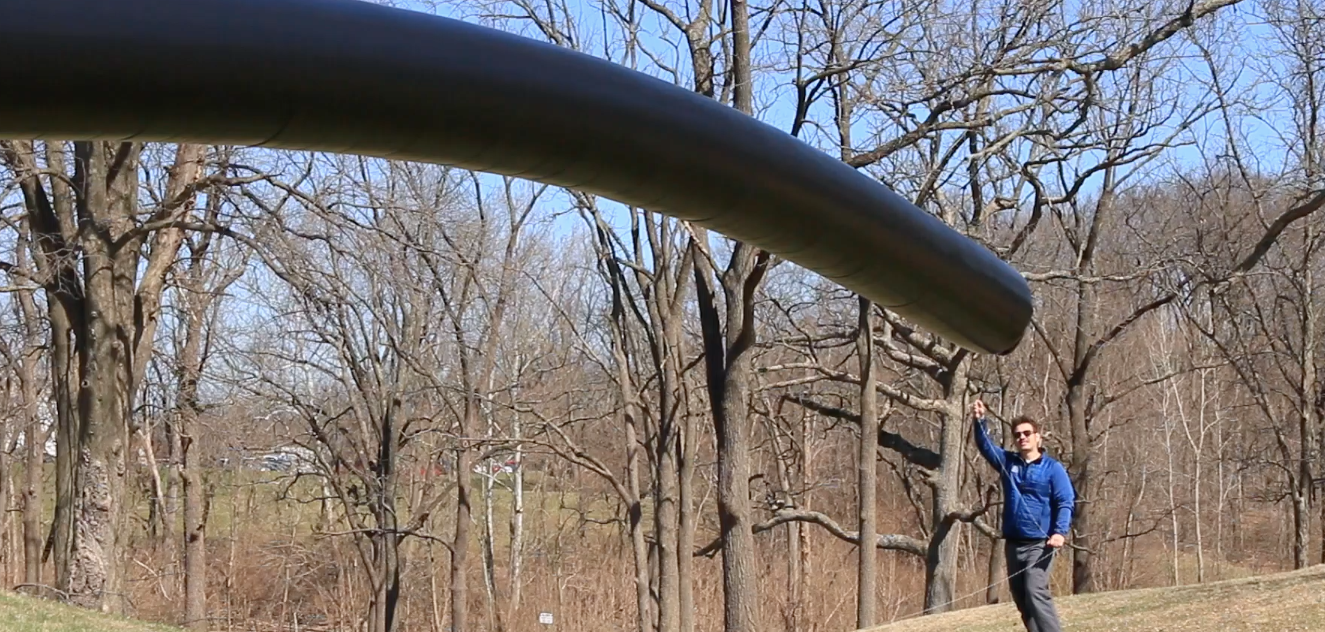DIY Solar Balloon Kite

Create your own Solar Balloon Kite with materials in your home and explore air density!
- Cellophane packing tape
- Seven (7) 30 gallon thin, black trash bags
- Scissors
- String
- Clean work space and a parent helper
Step 1: Gather materials.
Step 2: Cut the bottoms off of 6 trash bags.
Step 3: Lay the uncut bag out first. Then lay 6 cut bags end-to-end
starting at the top of the uncut bag. Be sure to tuck the bags into
each other at least 1 inch so no air will be able to escape when you tape them together. This overlap prevents air from escaping.
Step 4: Connect the bags together by taping them to each other with tape. Carefully cover the seams all the way around the bag so no air can enter or escape.
Step 5: Repeat step 4 with the remaining bags. Make sure you are careful to tuck them in the same direction as the other segment so the air will flow in easily. Your kite should look like a giant segmented earthworm with one open side.
Step 6: Tie a kite string to one end of your DIY Solar Balloon Kite
Step 7: Carefully inflate your balloon. Have a helper hold the closed end while you hold the open end to allow air to fill your balloon. You may have to run and move in the direction of the wind to fill up your balloon.
Step 7: Once it’s almost full, close off the open and and tie a knot to seal the balloon.
Step 8: Allow the kite to receive direct sunlight and then fly your kite!
The black color of the trash bags absorbs heat energy from the sun and the air inside the bags to heat up. As air molecules fain more energy, they spread out quickly and create more space between them. Because the air molecules inside are spreading out, they become less dense than the cooler air around the solar balloon kite. This allows the solar balloon kite to rise and float in the air. This is similar to a beach ball rising to the top of the pool water because the air inside is less dense than the surrounding water.
An airship pilot flies giant airships. The airships only fly about 30 miles per hour, but are extremely sensitive to the wind just like the solar balloon. Pilots need strong flying skills to respond to the slightest changes in the weather. In addition, Airships have to land into a group of people who rush to secure them to the ground, so expert piloting skills are necessary for safety. Even professional pilots need at least a year of additional training to fly a helium filled airship.
Did you know solar balloons can be made large enough for human flight?. The first human flight was piloted on May 1, 1973 by Tracey Barnes.
- Would the solar balloon kite work if you used white trash bags?
- Would it work with one trash bag?
- Does the solar balloon kite work better in the morning, in the middle of the day, or in the evening?
- Does it work on a cloudy day?
Watch the Air is Everywhere Music Video!

